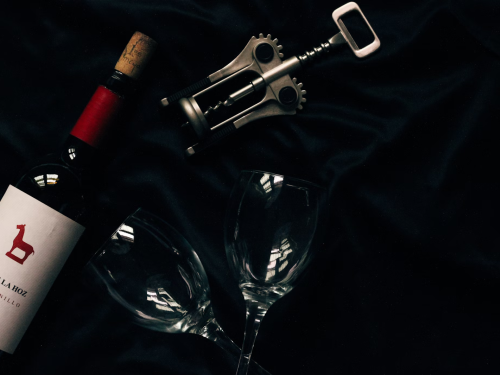How to Keep Your Wine Fresh After Opening
Once a bottle of wine is opened, oxygen begins to alter its chemistry, dulling flavors and aromas within days or even hours if left exposed. Preserving wine properly can extend its life by several days—or even weeks—without sacrificing taste.
If you’re a casual drinker or a passionate collector, knowing how to store opened wine can protect your investment and enhance your experience.
Below, we explore the science of wine spoilage, best practices for storing red, white, sparkling, and fortified wines, and the tools that can help prolong freshness with precision.
Wine Preservation Tools That Actually Work
Several products specifically designed to prolong the life of opened wine are called wine preservation systems. Here’s a look at the most effective options:
Coravin Wine System
Coravin is a premium preservation system that allows you to pour wine without pulling the cork. A thin needle pierces the cork while argon gas pushes wine into your glass, leaving the remaining wine untouched by oxygen. Ideal for high-end bottles or long-term storage.
Vacuum Pumps
Affordable and easy to use, these manually-operated pumps remove some air from the bottle. They’re less effective over longer timeframes but good for extending freshness by 2–3 days.
Inert Gas Sprays
Inert gas systems are especially useful for white, rosé, or delicate reds. They don’t require special stoppers and can be used on multiple bottles quickly. Always reinsert the cork or stopper afterward to keep the gas in place.
Understanding What Happens To Wine After Opening
Wine is a living product that evolves even after bottling, and once opened, it reacts rapidly with air. Oxidation, bacterial contamination, and changes in temperature are the primary enemies of open wine.
Oxidation And Its Impact
As soon as a cork is pulled, oxygen begins interacting with ethanol and other volatile compounds in the wine. At first, this can be beneficial—allowing the wine to "breathe" enhances complexity. But prolonged exposure dulls fruit notes, flattens acidity, and introduces off flavors akin to vinegar or sherry.
Microbial Spoilage
Acetobacter and other spoilage bacteria feed on oxygen to convert wine’s alcohol into acetic acid (vinegar) or ethyl acetate (which gives a glue-like aroma). This is more pronounced in wines with lower alcohol content or sugar levels and no preservatives.
Temperature And Light
Heat accelerates chemical reactions in opened wine, hastening its decline. UV light can also break down organic compounds, especially in white wines, leading to premature aging and flavor degradation.
How To Store Red Wine After Opening
Red wine generally lasts 3–5 days after opening when stored correctly, depending on grape type, age, and alcohol content.
Store In A Cool, Dark Place
Despite popular belief, red wine benefits from refrigeration after opening. Aim for temperatures between 12–16°C (55–60°F). If you don’t have a wine fridge, your kitchen refrigerator is fine—just let the wine warm up slightly before drinking.
Recork Or Use A Stopper
Re-insert the cork tightly, ideally the same way it came out. Better yet, use a dedicated wine stopper with a silicone seal for an airtight closure.
Use Vacuum Sealers
Vacuum pumps like the Vacu Vin system remove oxygen from the bottle, slowing oxidation. While not 100% airtight, they can extend the wine’s drinkability by a couple of days.
How To Store White And Rosé Wines After Opening
White and rosé wines are typically more fragile and benefit from stricter storage practices. Their longevity ranges from 3–7 days once opened.
Refrigerate Immediately
White and rosé wines should always go back in the fridge after pouring. The lower temperature slows oxidation and microbial growth. Keep the bottle upright to minimize surface area exposed to air.
Use Inert Gas Preservation
Spray systems like Private Preserve or ArT Wine Preserver use inert gases like argon or nitrogen to displace oxygen in the bottle. These gases are heavier than air and form a protective layer over the wine surface. They're particularly effective for whites, which oxidize faster due to lighter structure.
Glass Quality And Closure Matters
Wines with screw caps or synthetic corks may fare slightly better after opening, thanks to tighter seals and lower initial oxygen exposure during bottling.
How To Store Sparkling Wine After Opening
Sparkling wine is the most time-sensitive once opened. The CO₂ responsible for its bubbles rapidly escapes, leading to flat, dull wine within hours.
Use A Champagne Stopper
Standard corks or plastic stoppers won’t hold pressure. A proper Champagne stopper clamps over the lip of the bottle and seals in CO₂. These stoppers can maintain carbonation for 1–3 days, depending on the wine and seal quality.
Keep It Ice-Cold
Refrigeration is key to slowing gas release. Store the bottle upright in your refrigerator and avoid agitating it—movement speeds up bubble loss.
Avoid Spoons And Myths
Placing a spoon in the neck of a sparkling wine bottle is a common myth and has been debunked. It doesn’t preserve carbonation.
How To Store Fortified Wines After Opening
Fortified wines like Port, Sherry, and Madeira contain higher alcohol (17–20%) and are often more shelf-stable due to their unique production methods.
Tightly Reseal And Refrigerate
Although more resistant to spoilage, fortified wines still benefit from refrigeration and tight sealing. Dry styles (like Fino Sherry) should be consumed within a week or two, while sweeter or oxidized styles (like Tawny Port or Madeira) can last up to a month or more.
Use Dark Glass Bottles
Many fortified wines are bottled in darker glass to protect against UV degradation. Keep these wines in the dark, away from kitchen windows or countertop lights.
Tips For Maximizing Wine Freshness
To truly extend the life of opened wine, consistent and mindful handling makes the biggest difference.
- Minimize Air Exposure – After every pour, reseal the bottle promptly. Avoid leaving open bottles on the counter.
- Store Upright – This reduces the surface area in contact with air.
- Avoid Temperature Swings – Fluctuating temperatures accelerate spoilage. Don’t move wine repeatedly in and out of cold and warm areas.
- Don’t Decant Leftovers – Decanting increases oxygen exposure. Only decant what you intend to drink immediately.
- Use Smaller Bottles – Transfer leftovers into 375ml or 187ml bottles to reduce headspace and slow oxidation.
Endnote
Proper wine preservation not only ensures taste integrity but can also help reduce waste and save money over time. As interest in wine continues to grow, many winemakers are now producing smaller-format bottles and single-serve options designed for freshness and convenience.
Investing in these formats can be a smart strategy for solo drinkers or occasional sippers who want to enjoy wine without worrying about spoilage.

